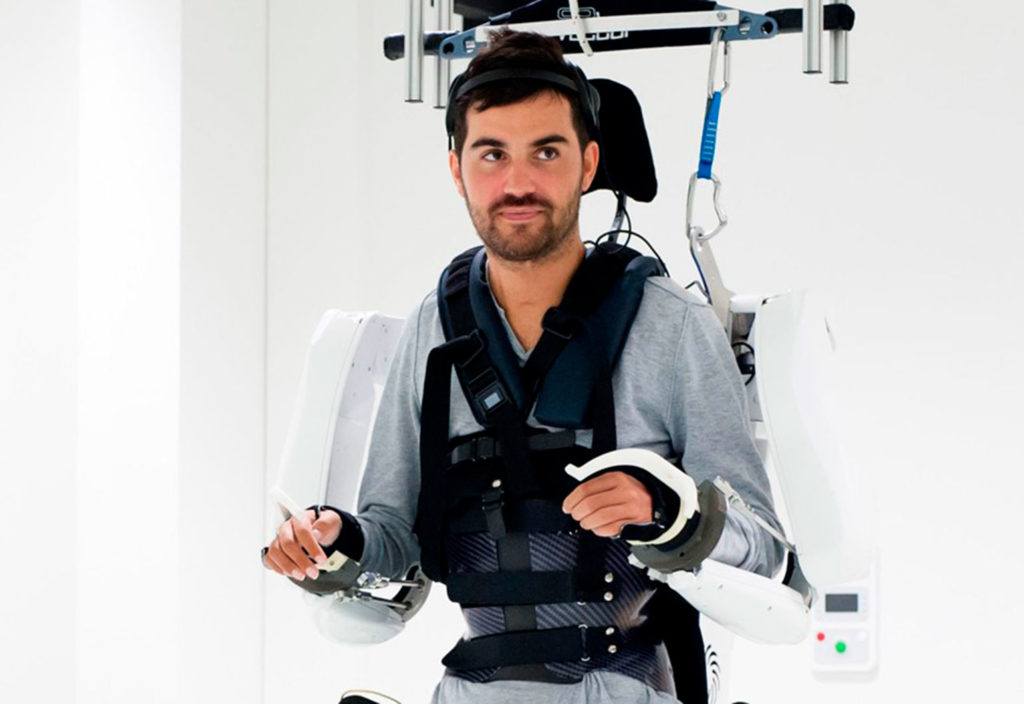A 30-year-old Frenchman paralysed from the shoulders down took his first steps in four years thanks to an exoskeleton controlled with a neural implant.
Two implants, each comprising 64 electrodes, were placed onto the surface of his brain over the sections responsible for sensorimotor function. These electrodes communicate wirelessly with computers to interpret these brain signals and translate them into an action.
The man practised acquiring the skills to control the exoskeleton by controlling characters in a computer game before moving on to the 65 kg exoskeleton. From there he graduated to walking, then moving the arms using just his thoughts. Finer movements such as controlling individual fingers will come later, according to the developers.
Identified only as Thibault, the man said this felt like being “the first man on the moon”.
“When you’re in my position, when you can’t do anything with your body … I wanted to do something with my brain,” he said.
This event is part of a two-year trial by biomedical research centre Clinatec and the University of Grenoble in France, the results of which were published in The Lancet Neurology. Lead researcher Professor Alim-Louis Benabid from the University of Grenoble said this trial showcases the first system designed for long-term use to activate all four limbs. He added it’s also unique because the technology is wireless.
Benabid commented on the potential of this technology to restore movement to paralysed individuals.
“This isn’t about turning man into machine, but about responding to a medical problem,” he said.
However, the developers stressed this suit is still just a proof of concept; it can only be used in a laboratory with a tether attached to the ceiling to keep it from falling. Data interpretation and processing is also proving to be a challenge.
Currently the developers are only processing signals from half of the implanted electrodes, as that is currently all they have capacity for – signals need to be interpreted within 350 milliseconds to take things from thought to action, otherwise it creates a noticeable and cumbersome lag in the suit’s movements.
The pace of technology is rapidly advancing, and new developments in artificial intelligence and data analysis could continue to improve these results.
Power of the mind
More examples of mind-controlled technology are making their way from science fiction into fact.
Australian biomedical engineer Dr Jordan Ngyuen is creating technology that interpretes brain signals and eye movements into actions that allow people with mobility issues to play music and even drive a car.
Another team of engineers from the University of NSW is investigating fibre optic chips as the future of neural interfacing technology. They believe the technology holds a wide range of applications, from treating epilepsy or Alzheimer’s disease, to allowing an amputee to control their prostheses with just a thought.
Work on exoskeletons has also progressed in recent years, with functions ranging from industrial to medical. Within the industrial sphere, applications include helping workers with difficult tasks like lifting heavy loads or controlling powerful equipment.

